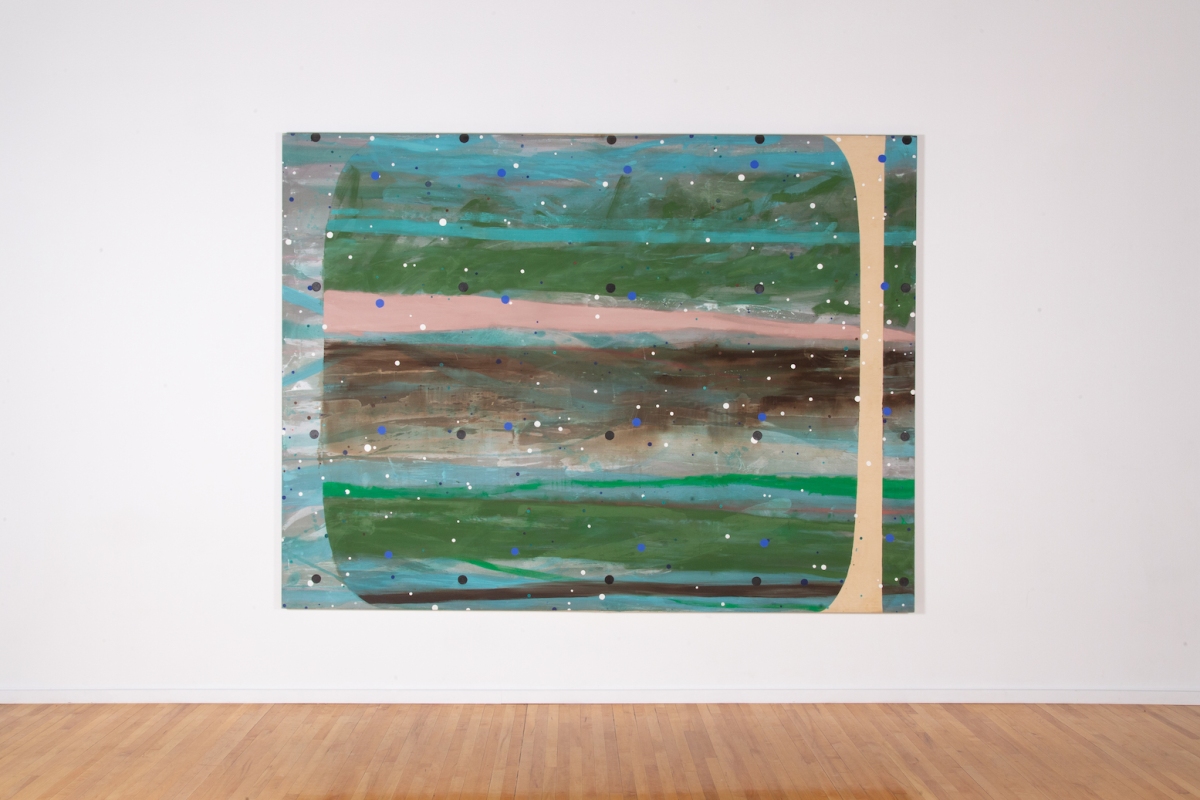
John Torreano, T.V. Bulge, 1969, Acrylic on canvas. Marjorie Barrick Museum of Art Collection. Gift of Mary and Weston Naef in Memory of Frances Marie and William David McNabola. Photo by Checko Salgado.
Our current Work Shop exhibition, Stars on the Ground: Works by John Torreano, closes this Saturday. When our curator Melisa Christ emailed Torreano with a list of questions she wanted to include the catalog, he sent her a generous response. We’re reprinting his answers below.
MC: You often describe your belief that art is transactional. What do you mean by this?
JT: We tend to think communication in art is a telegraphic process. ie., The artist has an idea expressed in their work of art. The viewer then looks at the artwork and decodes their idea. That is not how it really works. For example, a person will pass by many artworks before engaging with a particular artwork. The viewer determines if communication takes place, not the artist. The viewer is not a passive receiver of ideas. To offer a personal example: Whenever I am in Florence I always make a point to visit the Fra Angelico frescoes in the convent of San Marco. I do this because, from experience, I know that each time I visit those frescoes I will have a different insight. The paintings haven’t changed, rather it is me the viewer that is different. In this way art serves as a stimulus point (transactional terminal) for self awareness. For me the Fra Angelicos do this. They may not for someone else.
MC: You have shown an incredible commitment to art education throughout your career as an artist. Do you have any advice that you gave your students at NYU that you could also pass along to students of art here at UNLV?
JT: I was fond of telling my students, “Your job is not to make good art. It’s the critics’ job to say if it is any good or not. Instead your job is to make sure your art is doing what you want it to do.” If you are pushing your ideas and researching unknown possibilities, you are bound to feel insecure. Not quite knowing what you are doing is a byproduct of the process. How could it be otherwise? Getting lost creates insecurity. From my point of view, if you are not getting lost now and then, you are not doing your job.
MC: Can you talk about the use of gems in your work?
JT: People are naturally attracted to shiny objects, as they catch your eye when you move in relation to the object. Since the beginning of time people have thought of shiny objects as magical. The sun is and was the source of everything and thus, with an object like a gem or diamond, you are actually seeing a reflection of the sun. From this comes the idea that ‘every gem is a handheld star.’
The closing reception for Stars on the Ground will take place from 3 – 5 p.m., on Saturday, January 11th, with a special appearance by the artist. You can find more of Torreano’s work at his website.